S. W. Ellingson
Coherent Time-Domain Canceling of Interference for Radio Astronomy
Aug 08, 2022

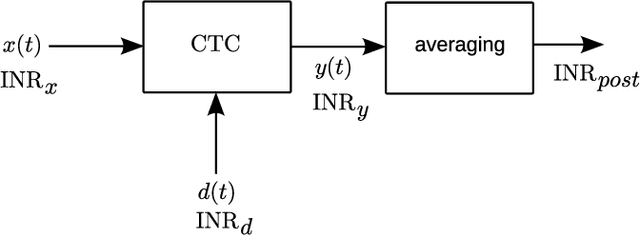

Abstract:Radio astronomy is vulnerable to interference from a variety of anthropogenic sources. Among the many strategies for mitigation of this interference is coherent time-domain canceling (CTC), which ideally allows one to "look through" interference, as opposed to avoiding the interference or deleting the afflicted data. However, CTC is difficult to implement, not well understood, and at present this strategy is not in regular use at any major radio telescope. This paper presents a review of CTC including a new comprehensive study of the capabilities and limitations of CTC using metrics relevant to radio astronomy, including fraction of interference power removed and increase in noise. This work is motivated by the emergence of a new generation of communications systems which pose a significantly increased threat to radio astronomy and which may overwhelm mitigation methods now in place.
Sidelobe Modification for Reflector Antennas by Electronically-Reconfigurable Rim Scattering
Feb 16, 2021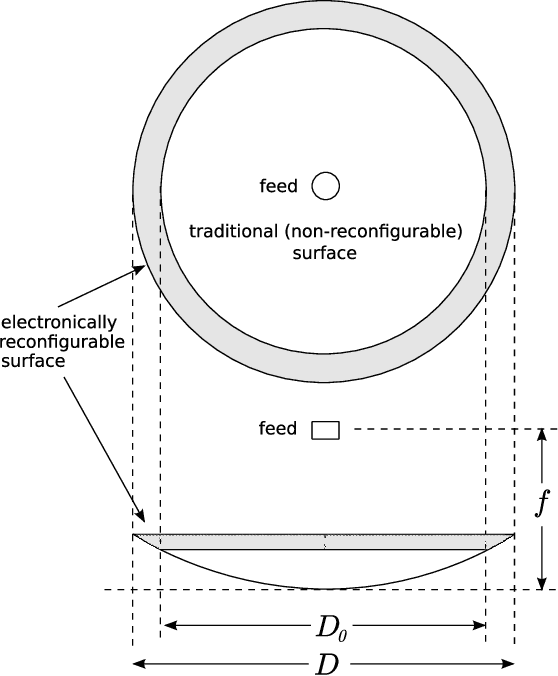
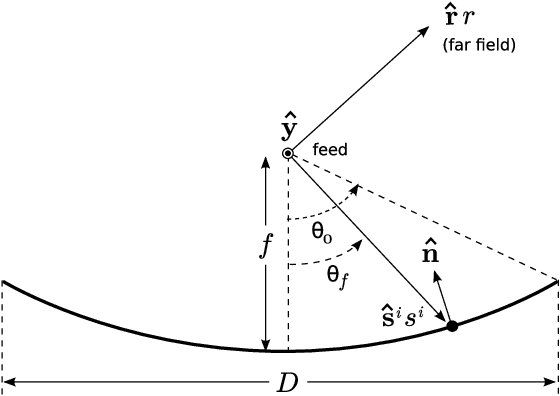
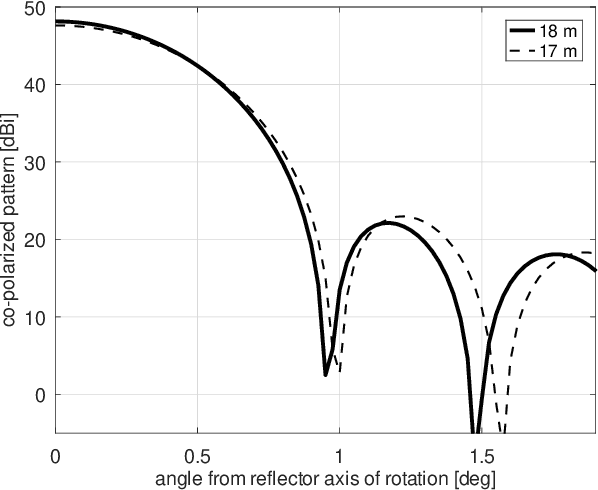
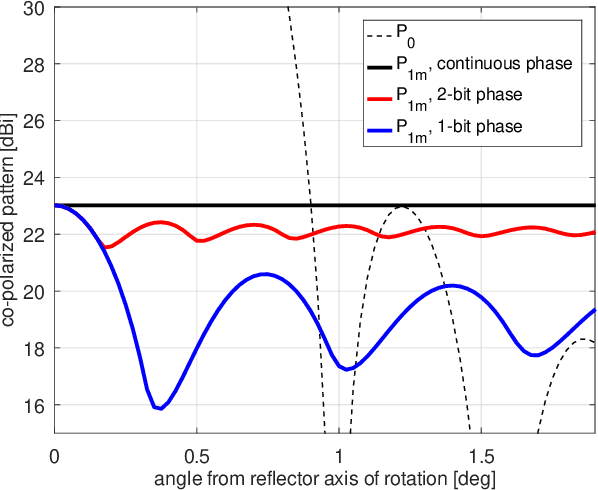
Abstract:Dynamic modification of the pattern of a reflector antenna system traditionally requires an array of feeds. This paper presents an alternative approach in which the scattering from a fraction of the reflector around the rim is passively modified using, for example, an electronically-reconfigurable reflectarray. This facilitates flexible sidelobe modification, including sidelobe canceling, for systems employing a single feed. Applications for such a system include radio astronomy, where deleterious levels of interference from satellites enter through sidelobes. We show that an efficient reconfigurable surface occupying about 11% of the area around the rim of an axisymmetric circular paraboloidal reflector antenna fed from the prime focus is sufficient to null interference arriving from any direction outside the main lobe with at most 0.3% and potentially zero change in main lobe gain. We further show that the required surface area is independent of frequency and that the same performance can be obtained using 1-bit phase control of the constituent unit cells for a reconfigurable surface occupying an additional 6% of the reflector surface.
 Add to Chrome
Add to Chrome Add to Firefox
Add to Firefox Add to Edge
Add to Edge